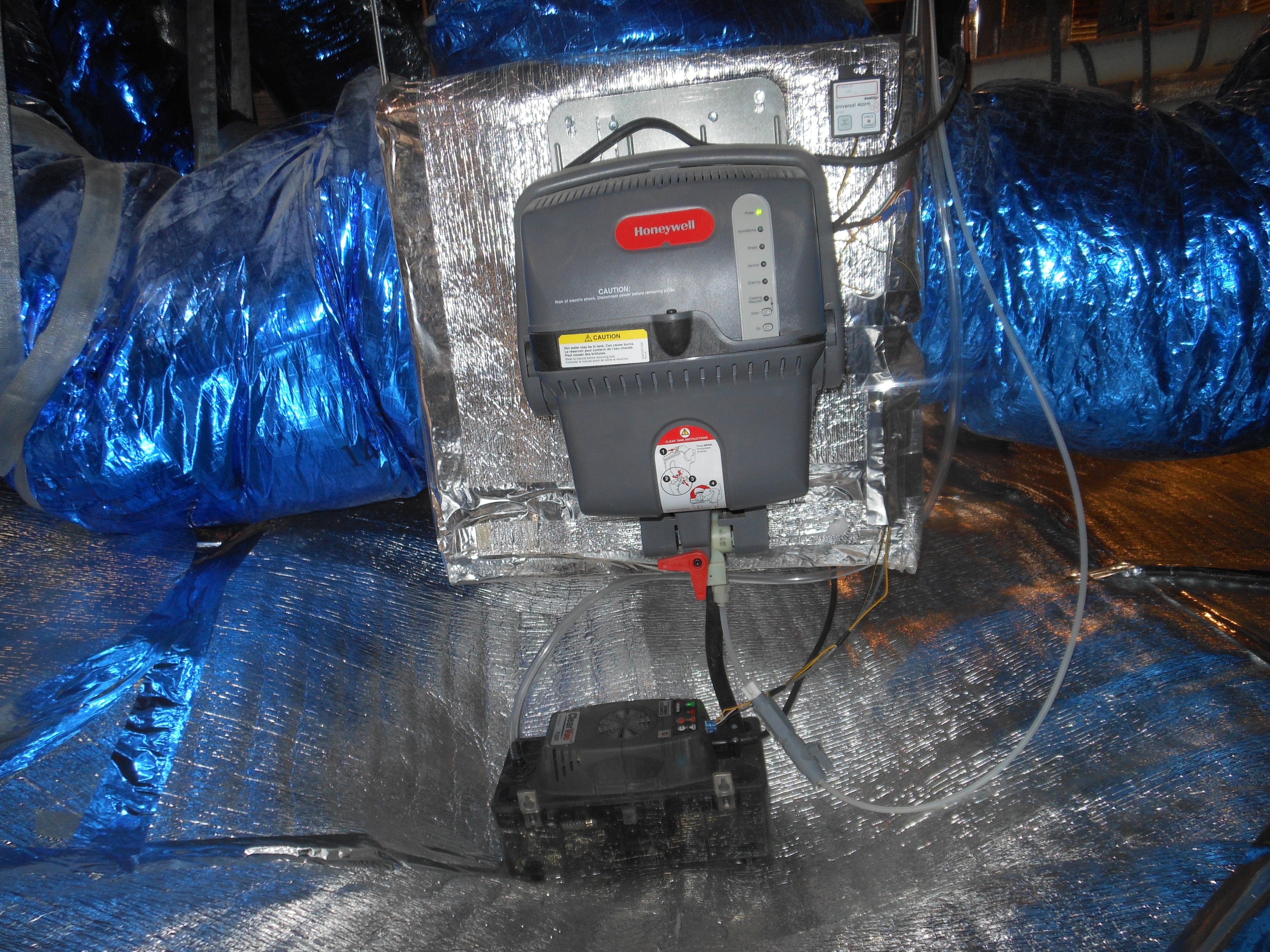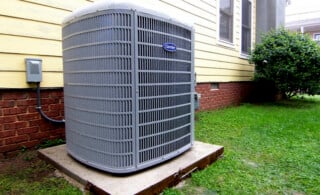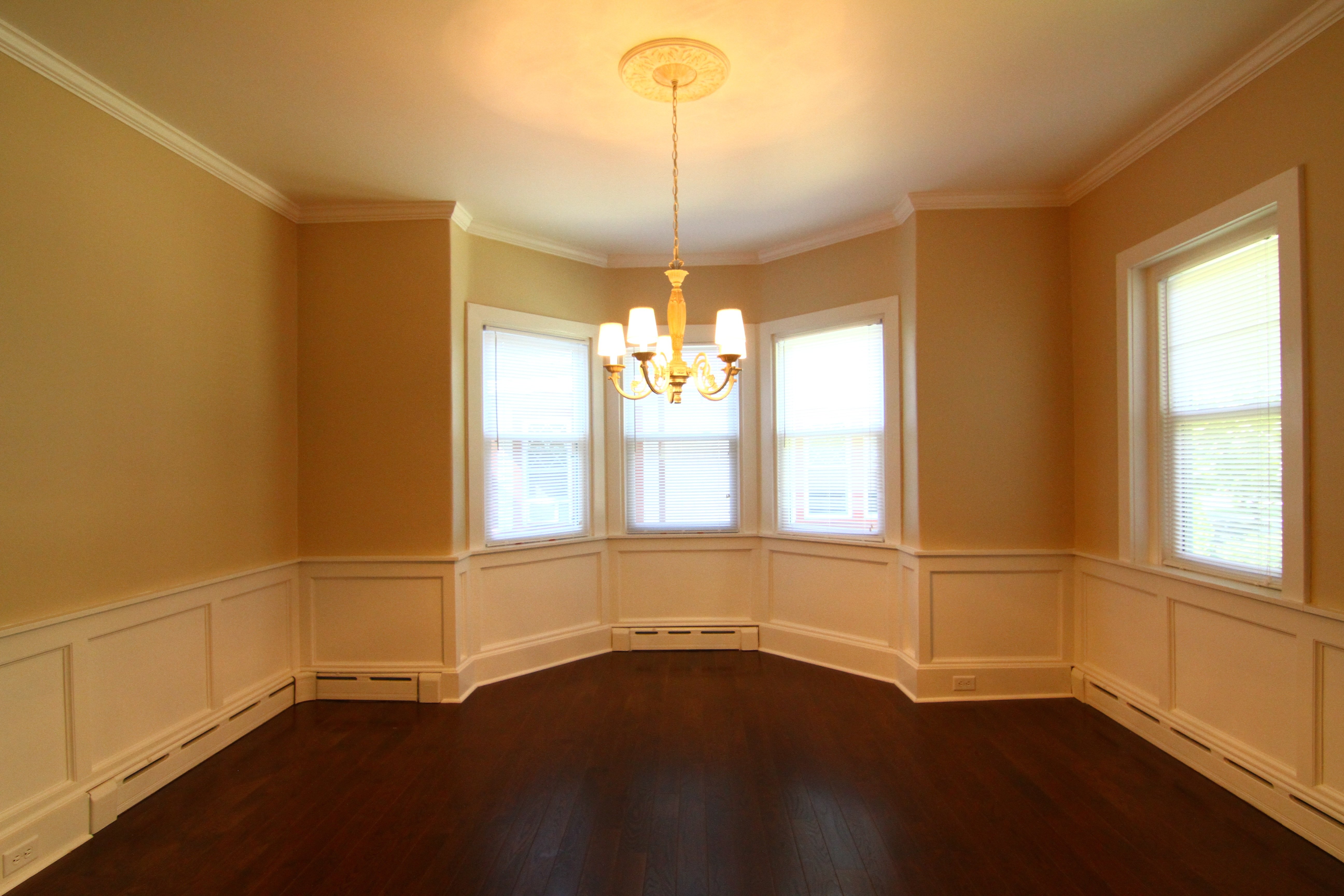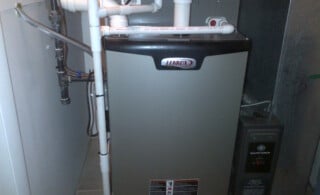
When you hear the word humidity, most people tend to cringe at the notion. Typically it’s associated with hot, summer weather and equated with discomfort and sweat. However, a certain level of humidity is actually beneficial and necessary in order to keep the atmosphere balanced and healthy, especially inside the home. If the air in your house becomes too dry it can cause nose and throat irritation (which can increase your chances for illness) or chapped lips and skin.
Plus, dry air can damage your home (chipped paint, peeling wallpaper, cracked furniture) as well as generate some severe static electricity. But if the moisture levels get too high, mold, bacteria, dust mite, or other infestations can occur as well. So it’s important to keep your humidity levels in check, and the best way to control the dampness is with a central air humidifier.
What Is a Central Humidifier?
A humidifier is a piece of equipment that moisturizes the air with water vapor. Oftentimes, these devices come in portable, tabletop, or console models, allowing them to humidify a single room or area. However, a central humidifier is hardwired into to your home’s heating and air conditioning unit and then hooked up to the house’s plumbing. So instead of only working on a particular point of use (bedroom, kitchen, or bathroom), these permanent installations humidify the entire house at once, making them extremely efficient in terms of efficacy, conservation, and financial savings.
Why Is It Better?
First off, most homes dry out due to their heating and cooling systems. The blasting air of a furnace or A/C unit can really dehydrate a house. But a central humidifier catches the culprit right at the source by moisturizing air as it leaves your HVAC system. Also, compared to portable units, it doesn’t require much maintenance. You won’t have to refill the water supply since it’s tied directly into your plumbing. Plus, since they don’t use a supply tank of standing water like console models, there is less chance for bacteria buildup which can then spread into the air.
Portable units may be less expensive upfront, but the electricity and water they waste ends up costing you in the long run. And they’re a bit of a hassle: you have to walk around them, they can sometimes spill and sweat, and if you have a steam unit they can often be dangerous to passing children or pets. Whereas a central air humidifier is out of sight and only functions when needed.
Is the Air Purified?
The biggest concern with all humidifying equipment is health and safety. The entire point behind balancing the moisture in the air is to avoid any infection, bacteria, or microorganisms. But this can’t be accomplished if the water supply being used to vaporize the air isn’t purified and sanitary. This is a big problem in portable units that use lots of standing water, so they need to be cleaned and distilled often. But even central humidifiers that use water from your own home’s plumbing doesn’t ensure that all minerals have been removed.
Therefore, as it’s installed, you’ll want to look into proper filtration. Filters usually come in the form of wicks, damp sponges, or wet discs that remove any minerals or pollutants from the water before it’s released into the air. Not only does it make the house healthier, it also eliminates elements from the water that causes chalky white dust to form on your walls and furniture.
What’s It Going To Cost Me?
The one drawback to central air humidifiers it their upfront price tag. The product runs about $150-250 and since it uses both HVAC and plumbing equipment, you’ll need to hire a professional contractor for proper installation. Make sure when you contact these professionals you give them an idea of what’s required. How big is the house? What kind of forced air equipment do you have? Where is the furnace and air conditioning located? You may even want to ask for a consultation on other additional updated features, such as a humidistat or air purifier.
Most companies also provide a warranty on their work so that if any repairs are needed afterwards (mineral deposits, clogged filters, mold buildup, unbalanced moisture levels, etc.), these experts can quickly fix the impending problem.
 Air Conditioner Condenser Coil Costs, Repairs & Replacements
Air Conditioner Condenser Coil Costs, Repairs & Replacements  Baseboard Heating Options & Benefits
Baseboard Heating Options & Benefits  Forced Air Heating Systems – How They Work & Options
Forced Air Heating Systems – How They Work & Options  Consider Wood-Burning Furnaces
Consider Wood-Burning Furnaces  Outdoor Heaters: a Refuge from the Cold
Outdoor Heaters: a Refuge from the Cold 

The price you listed would cover a bypass humidifier. A steam unit runs between $600 and $900 based on capacity. Down here in the south a furnace does not run long enough many days of winter and a bypass unit is just not effective.
Can a HVAC dealer install a central humidifier when installing a new, replacement heat pump/AC unit?
Can a central humidifier be installed on the main, in-house heat pump/AC unit, or must it be installed on the duct work?
Another drawback to a central air humidifier is that the colder it is outside outside the less it produces humidity. It should be the opposite because the more heat you need because it’s cold outside the dryer it gets inside. The humidifier should produce more humidity when it’s dryer inside not based on the weather outside.
what does it cost to install a humidifier and clean out the duct lines. about 2200 sq ft. the unit
is placed where it is easy accessed to.
Do you know, if a house has two furnaces, one for the first floor, and one for the second floor, would a single central humidifier attached to one be able to cover the whole house? Would the humidity traverse from one floor to the next?